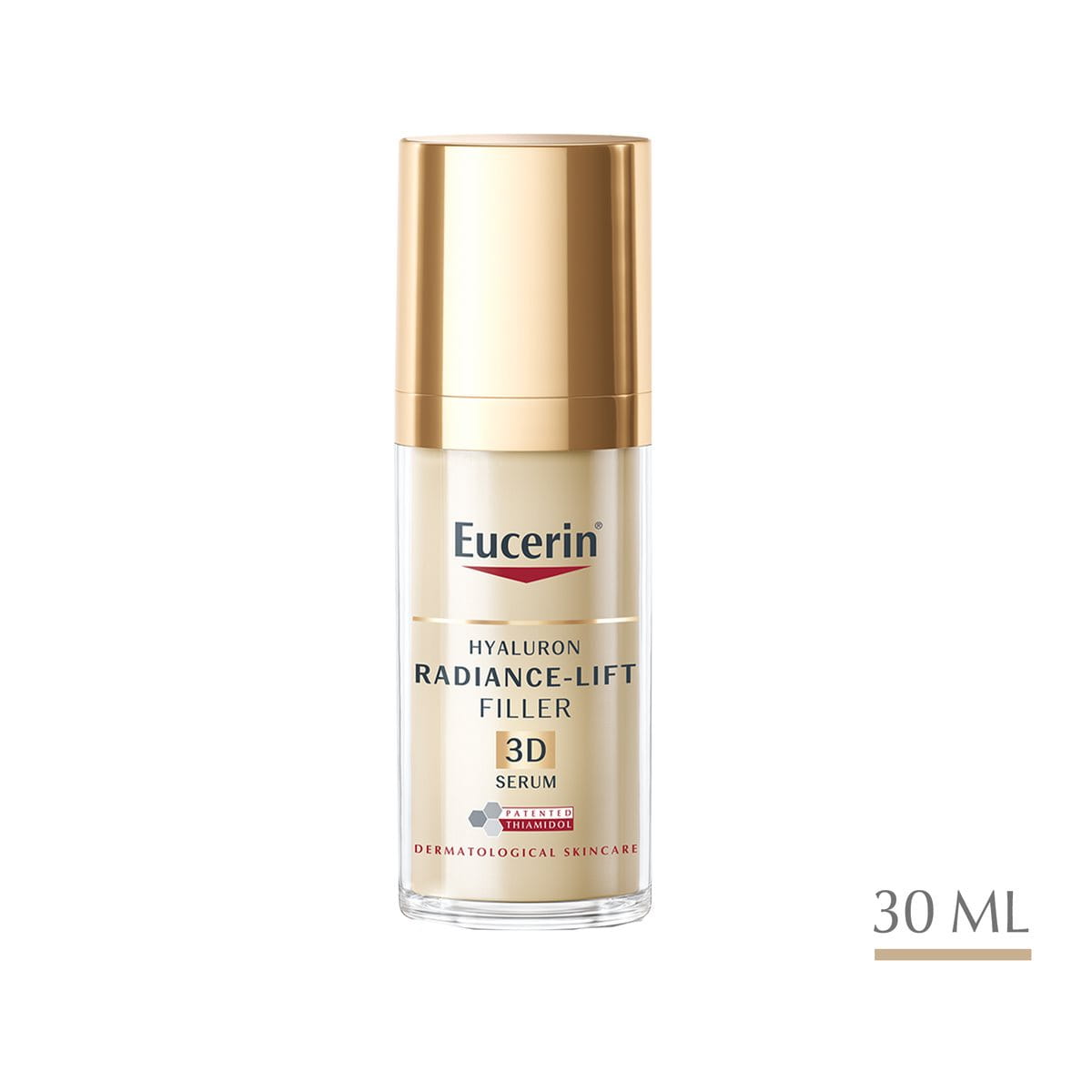Skin is a living organ and undergoes significant changes during a person’s lifetime. From the delicate skin of a newborn baby, through the teenage years when some are acne-prone to the wrinkles of later life. Each stage has its own demands and skin care should reflect these changing needs. Choosing appropriate products to cleanse, protect, nourish and repair skin at each of these stages will help to keep it healthy and ensure that your skin looks and feels its natural best, whatever your age.
Different ages and stages
Baby skin
Baby skin is just one-fifth of the thickness of adult skin. It has the same number of layers, but each layer is considerably thinner, making it especially delicate and sensitive.
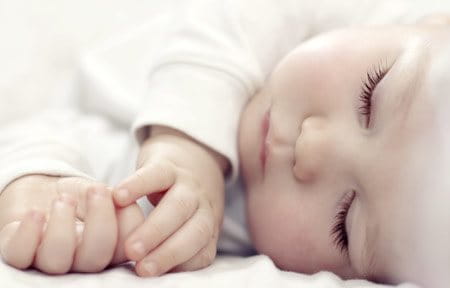

The outermost layer of the epidermis (the horny layer) is particularly thin and the cells are less tightly packed than in adult skin. Sweat and sebaceous glands are also less active and so the hydrolipid film and protective acid mantle are still relatively weak. This means that the barrier function is impaired and baby skin is:
- less resistant,
- especially sensitive to chemical, physical and microbial influences,
- prone to drying out,
- more sensitive to UV.
Sensitivity to UV is further enhanced by the fact that babies also have low skin pigmentation. Melancocytes (the cells responsible for melanin production) are present, but less active and so babies should be kept out of the sun.
Babies also have more difficulty regulating their body temperature than adults. This is because:
- the surface area of their body is relatively large,
- their sweat glands are less active,
- their skin circulation is still quite slow to adapt.
It is important that adults are mindful of this and monitor and control the temperature of their environment for them.
Read more about baby skin, the conditions that it is prone to and how to care for it in children’s skin.
Children’s skin
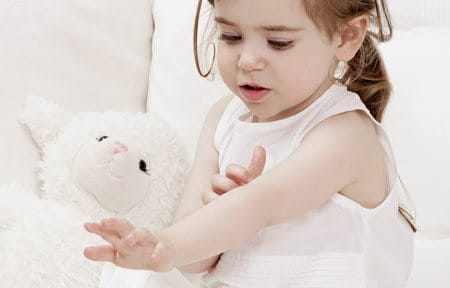
By the age of 4, skin and its appendages (such as hair, nails and glands) are a little bit more mature. However, children’s skin is still thinner and has less pigmentation than adult skin. Because these self-protection mechanisms are less developed, young skin is particularly sensitive to UV radiation. Read more about children’s skin and how to care for it.
By the age of 12, the structure and function of a child’s skin corresponds to that of an adult.
The teenage years

The hormonal changes of puberty can have dramatic effects on skin – particularly on the face, shoulders, chest and back. Increased sebum production and disturbed corneocyte shedding can lead to skin becoming oily and acne-prone. This usually disappears as the teenager matures although for some, especially women, acne can go on into middle age and beyond.
Late 20s
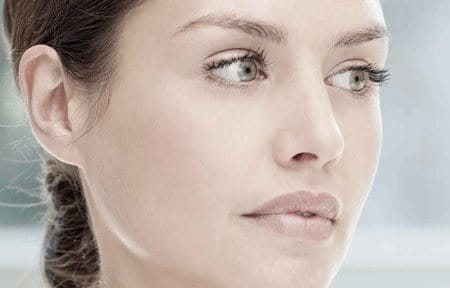
Genetics, lifestyle and environment will determine the stage at which the epidermis and the dermis start to thin but, from around the age of 25, the first signs of ageing may appear, normally in the form of fine lines.
When the skin starts to thin, its barrier function and its natural protection against UV are also gradually reduced.
Collagen mass and flexibility also begin to deplete at a rate of approximately 1% a year.
During the 30s
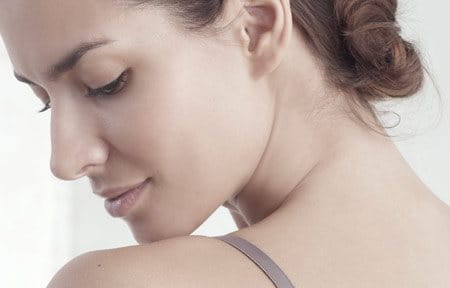
- The barrier function of their skin is increasingly weakened.
- The metabolic processes of the cells begin to slow down.
- Skin moisture loss increases.
- Skin elasticity reduces.
40s to late 50s
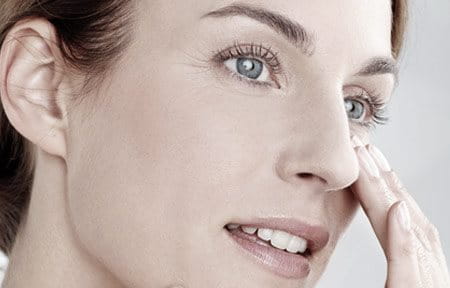
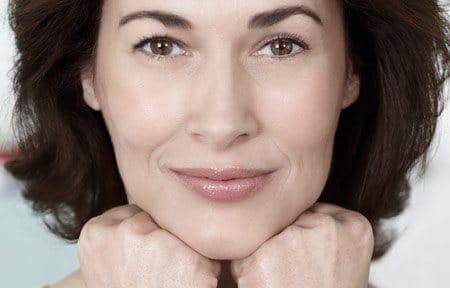
Over the next few decades skin structure gradually changes:
Epidermis:The ordered arrangement of the individual layers of the epidermis is lost. Fewer cells are formed, existing cells shrink and the top layers of skin become thinner. This can lead to:
- An increase in roughness and dryness.
- Areas of hyperpigmentation (known as age spots).
- Impaired wound healing and an increased risk of skin infection.
Dermis:
Connective tissues in the middle layer of skin lose their fibrous structure and water-binding ability and elastic fibres degenerate leading to a loss in strength and elasticity and the appearance of wrinkles.
There is also a gradual decrease in the development of blood vessels in the dermis. The dermis provides nutrients to the epidermis so, without nourishment, both layers and the connections between them become thinner and flatter, resulting in a loss of density and firmness in the skin common in post-menopausal women. Reduced blood flow also causes a loss of radiance. Skin can appear duller and some broken capillaries may appear.
Subcutis:
The lower layer of fatty tissue gradually reduces, resulting in a loss of volume and a loss of density.
Skin energy is also reduced and skin becomes less resilient to pressure.
During the 60s and 70s
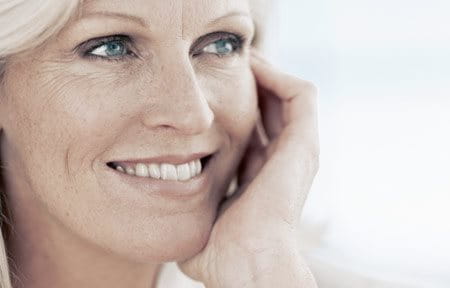
- The skin’s natural ability to produce lipids decreases resulting in dryness, dehydration and more wrinkles.
- Skin regeneration slows down and it becomes increasingly thin resulting in a loss of volume and a loss of density. Wound healing is also impaired.
- UV sensitivity increases and skin is prone to hyperpigmentation (e.g. age spots).
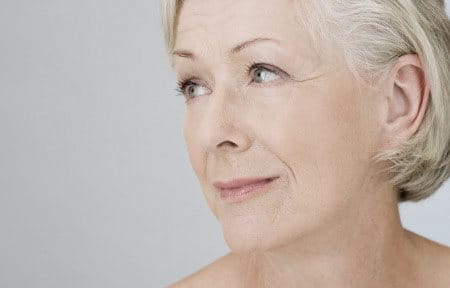
From the late 70s onwards, skin’s immune function has reduced, making it more susceptible to infection.
Read more about skin structure in skin structure and function. Read more about the ageing process, how to care for skin and delay the signs of general skin ageing.
Male and female skin ages differently. To find out more read how male and female skin differs.
What causes skin ageing?
Skin ageing is caused by a combination of different factors, both internal and external. Understanding the way that internal and external factors affect the skin’s structure and function can help to inform skin care choices.
Internal factors
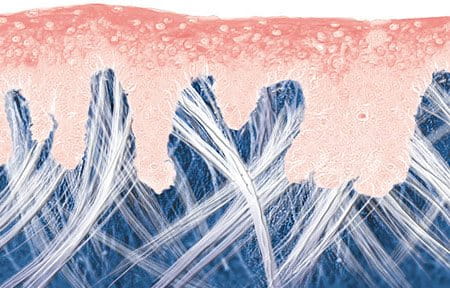
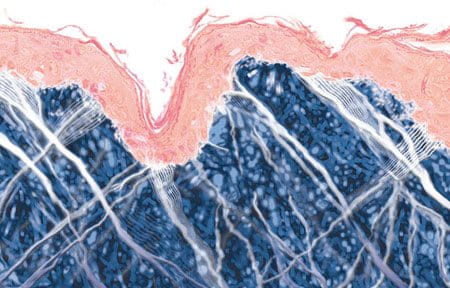
Our biological age determines structural changes in the skin, some of which are inevitable and unavoidable:
- A poorer blood supply means that less oxygen and fewer nutrients travel to the skin’s surface which results in a duller tone.
- Lower sebaceous and sweat gland activity leads to a weakening of the hydrolipid film and results in dry skin. Read more in age-induced dryness.
- Reduced oestrogen production post-menopause, combined with diminishing cell regeneration, affect the structure of female facial skin.
Genetics also play a key role in how skin ages. Our ethnicity, gender and the skin type that we are born with all make a difference to how quickly the signs of ageing ap¬pear on the surface of the skin.
External factors
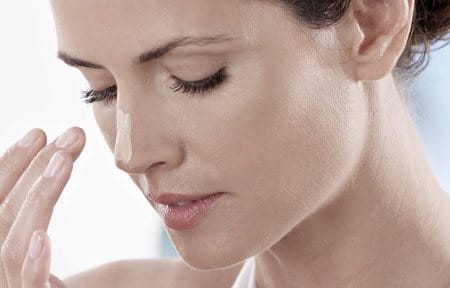
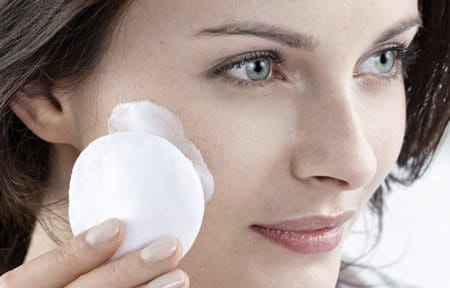
The good news however is that more than 80% of skin ageing is caused by external factors which can be influenced:
- Environmental factors: UV exposure, climate changes and air pollution.
- Lifestyle factors: smoking, alcohol, nutrition, stress and lack of appropriate skincare.
Read more about the factors that influence skin ageing in general skin ageing and factors that influence skin.
Research has shown that areas of skin that remain unexposed to sun maintain their tone, elasticity and the ability to regenerate until an advanced age. It is exposure to UV rays that causes skin to age prematurely. This means that reducing our exposure to the sun and using proven and effective sun protection is a vital step that can be taken to delay the signs of premature ageing. Read more in sun.
Daily cleansing and skin care using products formulated to match the particular needs of the skin type, condition and age will help to keep skin healthy and delay the signs of premature ageing. Read more in a daily skincare routine for the face.
